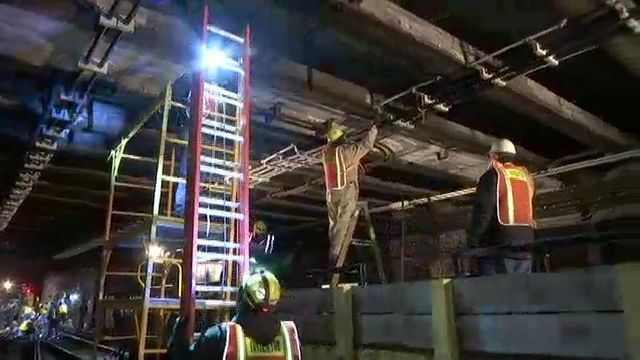Train riders have grudgingly gotten used to years of weekend work on their line that sometimes shuts down the link between Queens and Manhattan but it's a project the MTA says will ultimately improve the line. NY1's Jose Martinez filed the following report.
Another weekend of work along the Number 7 line and frustration for its 300,000 weekend riders.
"It's been going on for the last, past three or four years," said one 7 train rider.
"A pain!" shouted another rider.
It's all due to a massive, multi-year project to upgrade the 7's signal system and increase how often trains run on a line with 500,000 riders on weekdays.
"People don't believe that's the goal, but that's the goal. We don't want to see trains break down, we don't want to see people get stuck. We'd like to see everybody moving along nice. And, you know, the less headaches the better," said New York City Transit Engineer Andy Lubrano.
The job will make the 7 only the second subway line - after the L - to have Communications Based Train Control, a modern signal technology designed to increase the line's capacity.
But it's far from a small job on a line stretching from Times Square to the Flushing Main Street station.
"If just one little bit of work takes an entire weekend, imagine how many weekends it takes to wire up the entire line. So, it's a staggeringly complex job," said MTA Spokesman Adam Lisberg.
The shutdowns are scheduled for weekends when the line's ridership is lowest. So it's not happening when the Mets are in town.
As part of the work, crews have to run cables, install antennas and lay down transponders on the tracks that send signals alerting system operators of a train's exact location.
But the shutdown is not all about signals. Crews are also upgrading tracks and installing a new power system.
"You do absolutely everything you can possibly do within reason in the smallest amount of area. And that's what's happening right now," Lubrano said.
Out of sight of 7 train riders, who simply would like weekends without transit headaches.
"Because the work that you see going on around here, you can't do when there's trains running. It's simply unsafe and inefficient to be running through a work site like this," Lisberg said.
Which is what stretches of the line will remain for now.
And after next weekend, riders on the 7 train can expect 10 more weekends of work on their line - but that's just through late May. The hope is to have job completed by 2017.




